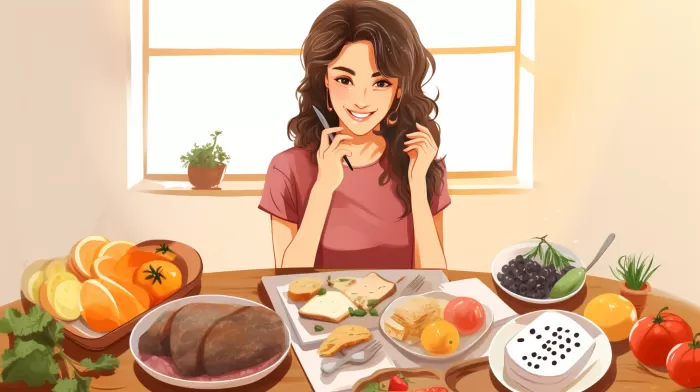We’ve all been there – the moment when we’re pressured or seduced into eating foods that are bad for our health, especially during the holidays and special occasions. It can be challenging to maintain a healthy diet and avoid these temptations. However, it’s easier to stay on track when you’re able to share your “Food Story” with others.
Your “Food Story” explains why you choose to stay away from certain foods and prioritize specific types of foods in your diet. When others understand your “Food Story,” they’re more likely to stop pressuring you to eat foods that could potentially harm you.
A personal journey
For instance, my daughter Zebby is gluten-and dairy-free and has now reached the age where she’s able to make her own decisions about what she will and will not eat. Her journey to understanding her “Food Story” involved navigating the challenging experiences of Thanksgiving and Christmas dinners with family members who didn’t always understand gluten sensitivities.
Zebby’s grandmother would prepare traditional holiday meals, believing that a little of her special dishes wouldn’t hurt anyone. However, understanding my own food sensitivities, I would prepare dairy- and gluten-free options for myself and my spouse. Zebby, not wanting to disappoint her Grandma, would partake in the holiday feast, resulting in painful migraines and vomiting for several days afterward – symptoms triggered by her consumption of gluten and dairy.
Learning to communicate
As Zebby’s experiences with navigating her “Food Story” progressed, so did her ability to communicate with family members. Just like my daughter, we all need to learn how to communicate our “Food Story” to those around us. By doing so, we can put an end to the constant pressure to consume unhealthy foods we know are bad for us.
The next time Zebby went to her Grandma’s for Christmas, she stuck to her gluten- and dairy-free food options. She explained to her Grandma that consuming gluten and dairy resulted in terrible migraines, sometimes lasting for days and accompanied by vomiting. This open communication led to a greater understanding from her Grandma and allowed Zebby to maintain her dietary choices without any further pressure.
A valuable lesson
It’s a valuable lesson for all of us because no one is immune to eating the wrong foods. I, too, have indulged in certain unhealthy options in the past, which resulted in flare-ups of my severe facial pain within 48 hours. These experiences provided helpful feedback that has made it much easier for me to commit to being meticulous about my food choices.
Tips for sharing your “Food Story” with others
- Be prepared to explain your food sensitivities and the consequences: Share how eating specific foods affects you negatively and why you need to avoid them.
-
Offer to bring your own dish: When attending gatherings, let your host know ahead of time that you would like to bring a dish so that you have something you feel safe eating.
-
Eat before attending events: If you know you’re going to an event with questionable food options, eat beforehand to avoid the temptation of making poor food decisions.
Take charge of your health
In the end, we all have our own unique “Food Story” that relates to our individual nutritional needs and choices. Taking the time to communicate with friends and family about our “Food Story” can help us gain support in maintaining a healthy lifestyle. It’s essential to take charge of your health and make the best decisions for your body, no matter the situation.
For more information on how to navigate eating for optimal health, visit the community resources page at Terry Wahls’ website. If you’re interested in learning more about how to beat progressive MS using Paleo principles and functional medicine, consider pre-ordering a copy of The Wahls Protocol from Amazon or Barnes and Noble.



